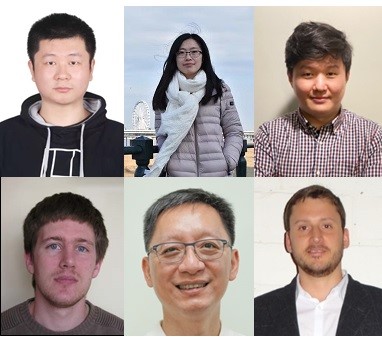Introducing the researchers:
Marjorie Cepeda-Plaza studied Chemistry at Universidad Chile and received her Doctorate in Chemistry from Pontificia Universidad Católica de Chile. After postdoctoral work with Dr. Yi Lu at the University of Illinois at Urbana Champaign, she joined the Chemical Science Department at Universidad Andrés Bello in Chile. Her research is focused on the study of the mechanisms of catalysis of DNAzymes. She is currently part of the Committee for Gender Equality in Research and the Academic Committee of the Center for the Communication of Science at the same University.
Francisca Rojas Hernández obtained her bachelor´s degree in Chemistry from Universidad Andrés Bello (UNAB) in 2020. Her thesis was focused on understanding the role of divalent metal ion in the catalytic mechanism of the 8-17 DNAzyme. She is currently working as a research assistant at the Laboratory of Bioinorganic Chemistry at UNAB. She also a great visual artist.
Catalina Cortés Guajardo obtained her master’s degree in Chemistry from Universidad de Chile in 2020. Her thesis was focused on fluorescent probes for singlet oxygen. She spent two years working as research assistant at the Laboratory of Bioinorganic Chemistry at UNAB. Now she is pursuing her doctorate degree on Chemistry at Universidad de Chile.
Romina Paillao Bustos is a biotechnologist from Universidad Mayor. She recently obtained her master’s degree in management and technological entrepreneurship from Universidad Adolfo Ibáñez. After spending six months doing research at the Laboratory of Bioinorganic Chemistry at UNAB she joined IQVIA working as CRA I.
What inspired your research in this area?
As a chemist, it was wonderful to discover the catalytic capabilities of DNA. What motivates my research is putting together the puzzle that relates DNA functional groups and conformations with their catalytic activity. Also, it is stimulating to be involved in the scientific formation of undergraduate students in Chile and relate them with the fascinating field of DNA catalysis.
What do you personally feel is the most interesting/important outcome of your study?
Our findings point out the stabilization of the 5′-O leaving group by the hydrated metal ion acting as a general acid in the phosphodiester transfer reaction catalyze by the 8-17 DNAzyme. These results are valuable to understand the precise role of divalent metal ion cofactors in the catalytic mechanisms of DNAzymes.
What directions are you planning to take with your research in future? What are you going to be working on next?
We continue working to understand the role of metal ions in the catalytic mechanism of the 8-17 DNAzyme. We are also trying to find out secondary and tertiary catalytic strategies that assist the RNA-cleavage reaction. In addition, we are interested in exploring similarities and differences among RNA-cleaving DNAzymes.
Read the full article: Hydrated metal ion as a general acid in the catalytic mechanism of the 8–17 DNAzyme
See the other articles showcased in this month’s Editor’s Collection
See every article in the full Editor’s Collection

























